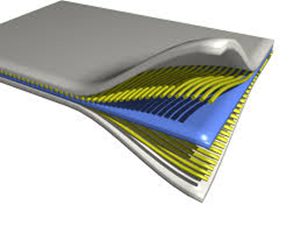
For decades, industries such as construction, aviation and architecture have used materials such as steel, aluminium and granite due to their strength and durability. However, in recent years, composites have been replacing these traditional materials, but what are they?

As the name suggests, composites are a combination of two different materials – a reinforcement and a matrix. The reinforcement is usually a fibre such as carbon or glass, which is bound by a matrix, such as epoxy polymer – these then protect and strengthen each other. The resulting composite possesses the most desirable qualities of the original materials, which brings us to why they are replacing traditional materials.
They Are Strong yet Light
Metals such as steel and aluminium are known for their strength, which is why they have consistently been used in building and engineering, but steel especially is not known for being particularly lightweight. Carbon fibre, for example, is around 75% lighter than steel and 30% lighter than aluminium. This makes composites highly desirable in the automotive industry, as its use not only drastically reduces vehicle weight but absorbs more energy than traditional materials, improving crash safety.

They Are Durable
Although they can corrode if bonded to metal elements, composites themselves never rust and maintain their shape in any condition – unlike some traditional materials which may warp, swell or fracture in certain weather or temperatures. Most composites are also incredibly resistant to potentially damaging natural or chemical agents – for example, nickel composites such as those from https://www.poeton.co.uk/advanced-treatments/apticote-480-advanced-nickel-composite/ have been shown to be incredibly resistant to salt spray. These properties make composites a good option for outdoor use and decrease the need for repairs or maintenance over time. According to the BBC, they are so durable that they are incredibly hard to dispose of, although progress has been made on ways to recycle them.
They Are Cost-Effective and Easy to Produce
The reduced weight of composite materials means they are generally cheaper to use, and thanks to Digital Composite Manufacturing (DCM) and other processes, they are easier to produce than ever.
They Have Many Desirable Properties
Composites have low electrical conductivity, making them a low fire risk and therefore relatively safe. They also have thermal properties and are therefore often used to insulate certain components. They are incredibly versatile, due to being compatible with many different types of coatings and adhesive, and some even have mould-release surfaces, making them less prone to degrading. According to The Engineer, they could also be used to improve hygiene on public transport.
They Offer New Design Options
Not only can composites consolidate existing materials, but they can be moulded into any shape, meaning that they can perform a wide variety of purposes in new designs that couldn’t have been achieved with traditional materials. The texture of composite surfaces can also be finished to mimic a wide range of textures, further increasing the range of end looks that can be achieved in a product.
